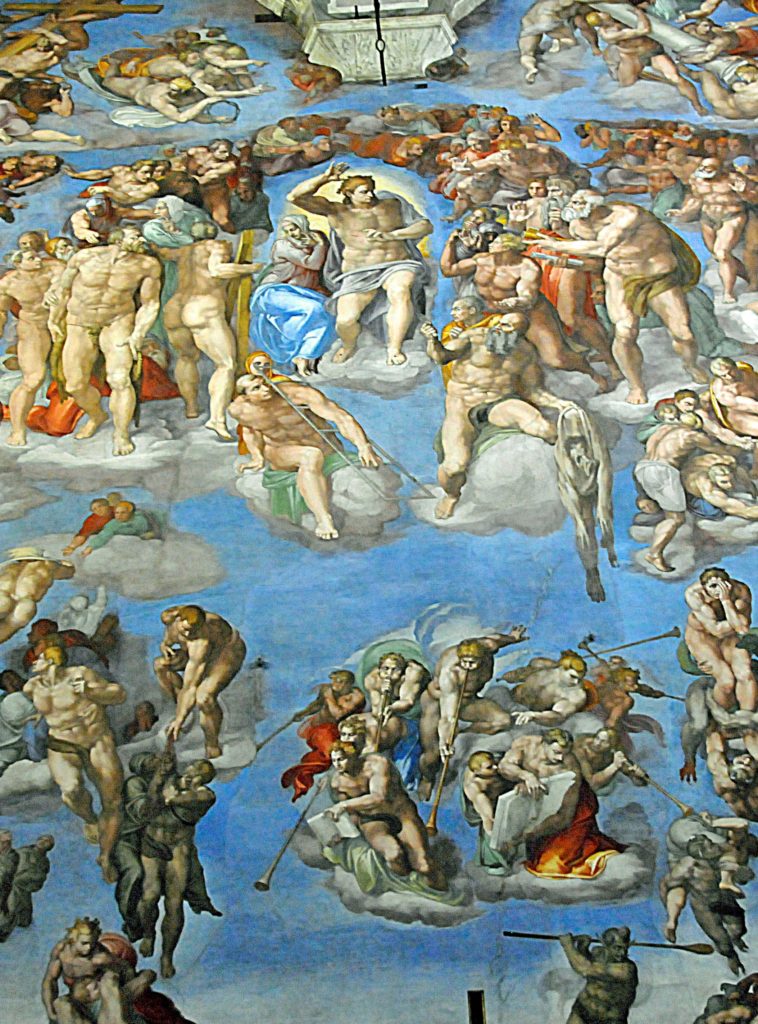
About 25 years after finishing his famous ceiling of the Sistine Chapel, sixty-one-year-old Michelangelo began creating “The Last Judgment” on the wall above the chapel’s altar. Contemporary critics demanded that the dramatic fresco be destroyed. Some of it was.
Completed in 1541 after four years of effort, “The Last Judgment” depicted a nearly nude Jesus at the end of time, condemning the living and resurrected dead on his left to hell and welcoming those on his right into heaven. Nearly all the other 300 or so swirling bodies, including that of Peter, were originally nude, reflecting Michelangelo’s admiration of the human form and his virtuosity in depicting it. When Biagio da Cesena, the Pope’s Master of Ceremonies, saw the nearly completed work, he complained that it was more appropriate for a public bath than a chapel. Michelangelo responded by painting da Cesena’s donkey-eared head atop the body of Minos, the guardian of hell, with a snake coiled around his body and biting him where it would hurt. In 1549, Cardinal Alessandro Farnese commissioned Marcello Venusti to paint a copy of “The Last Judgment” on wood for his private art collection.
In 1563, the Council of Trent decreed that claimed obscenity in “The Last Judgment” be eliminated. Soon after Michelangelo’s death, artist Daniele da Volterra, told the original would otherwise be destroyed, covered most of the exposed genitals and female breasts with loincloths and scarves, earning him the epithet “Il Braghettone” (“the breeches maker”). In one case he recreated an entire scene, believing the original was sexually explicit. During recent restorations of “The Last Judgment,” some over-paintings were removed, but de Volterra’s coverings were retained because of fears he had destroyed the underlying fresco. Anyone curious about the uncensored version can see Venusti’s copy in Museo di Capodimonte in Naples, Italy, available online.
Comments are closed.